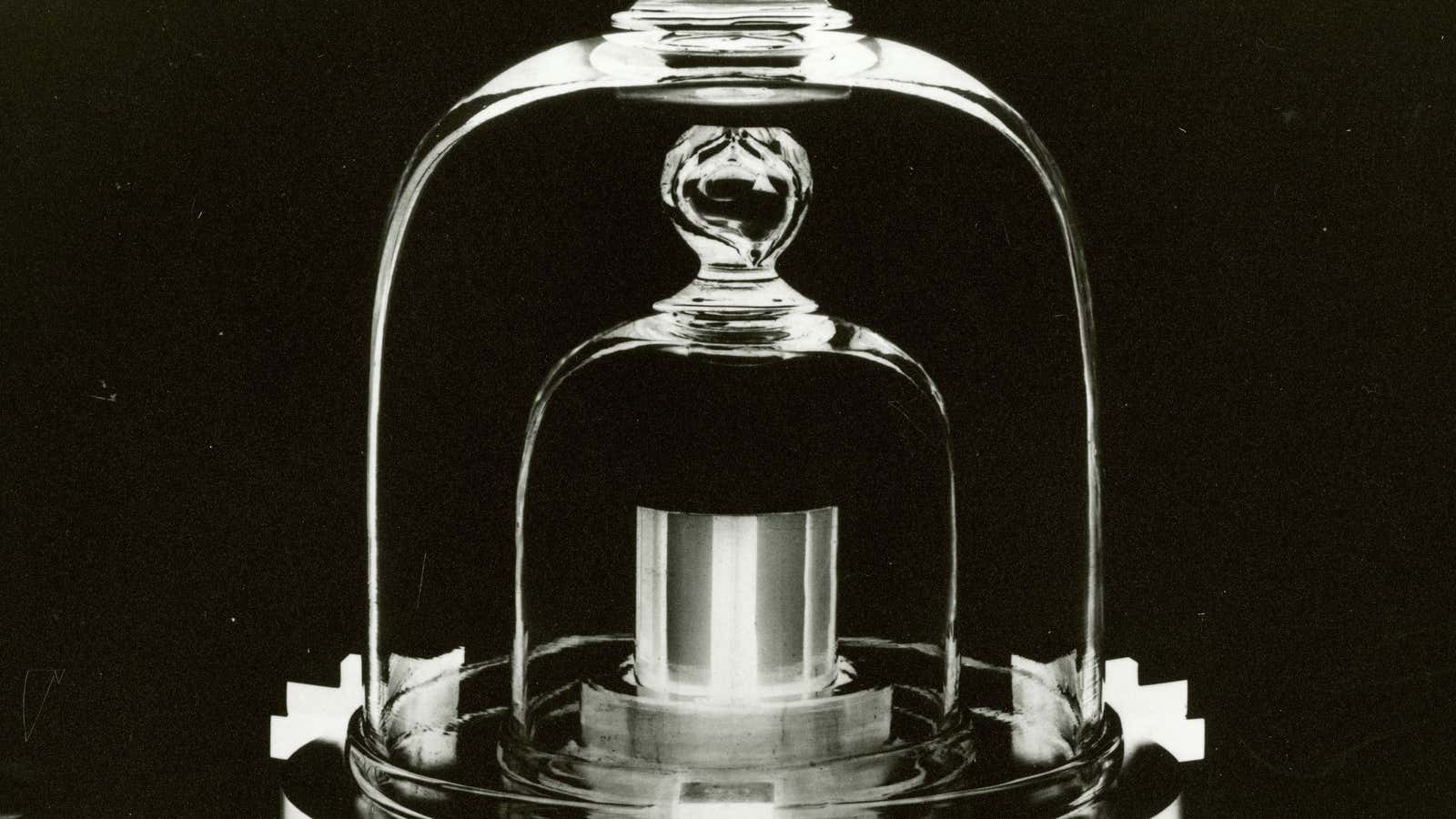It was supposed to be the measurement system for all people, in all places, for all time—one which used the natural world as its basis. But in the centuries since king Louis XVI of France first tasked a group of scientists to help him develop a new system of measurement, many of the foundations of the metric system have been shown to be fundamentally unsound. Few features of the system have been more troublesome than the measurement standard for the kilogram, which may change for good after a vote coming up this week at the annual General Conference on Weights and Measures.
Delegates seem likely to opt for a new measurement system, defined in terms of an electric current, as the basis for the kilogram. To understand why, it’s useful to go back in history.
Before the kilogram, there was the “grave.” This, the king proposed in the late 1700s, would be a standard measurement based on the weight of a liter of water just above the point of freezing. (To find its “true mass,” it would be weighed in a vacuum.) This inalienable measurement was eventually renamed the kilogram, with the gram—one thousandth of its weight—the key unit.
But there were a few problems with the approach. To begin with, it’s essentially impossible to weigh an open vessel of liquid in a vacuum—and air pressure has a substantial influence on mass. When scientists attempted to reweigh a decimeter of water in 1799, the final result was just 99.92072% of the mass of the provisional kilogram made four years earlier. Such a margin of error required some other absolute standard as the core measurement, and one which would not be affected by anything, not least the vagaries of the air that surrounds it.
The solution came a century later, in the form of a small metal cylinder made of platinum and iridium. This, finally, was the ur-kilogram, the ultimate kilogram, the inviolable kilogram. It would be kept away from the hordes, placed beneath a Russian Doll-like series of bell jars and locked in a vault in the outskirts of Paris. (Dozens of copies would be kept elsewhere, and used to standardize individual nations’ weights and measures systems.)
For the last 129 years, the Paris original—the International Prototype Kilogram—has served as the basis for what we know as the kilogram. Occasionally, it’s taken out and weighed, as one might do with any international standard of measurement. But, while by definition it always weighs one kilogram, the IPK appears to have lost mass relative to the mass of the copies. Theories abound; maybe the copies have absorbed air molecules, or maybe technicians handling the original have cleaned it too vigorously and shaved off the odd atom.
Many metrologists seem both convinced and irked by the fecklessness of the present kilogram measurement. As Stephan Schlamminger, a physicist at the US National Institute of Standards and Technology, told the Guardian: “If aliens ever visit Earth what else would we talk about other than physics? If we want to talk about physics we have to agree on a set of units, but if we say our unit of mass is based on a lump of metal we keep in Paris, we’ll be the laughing stock of the universe.”
This week’s weighty vote may strip away century-old reverence around this singular metallic block for good.
